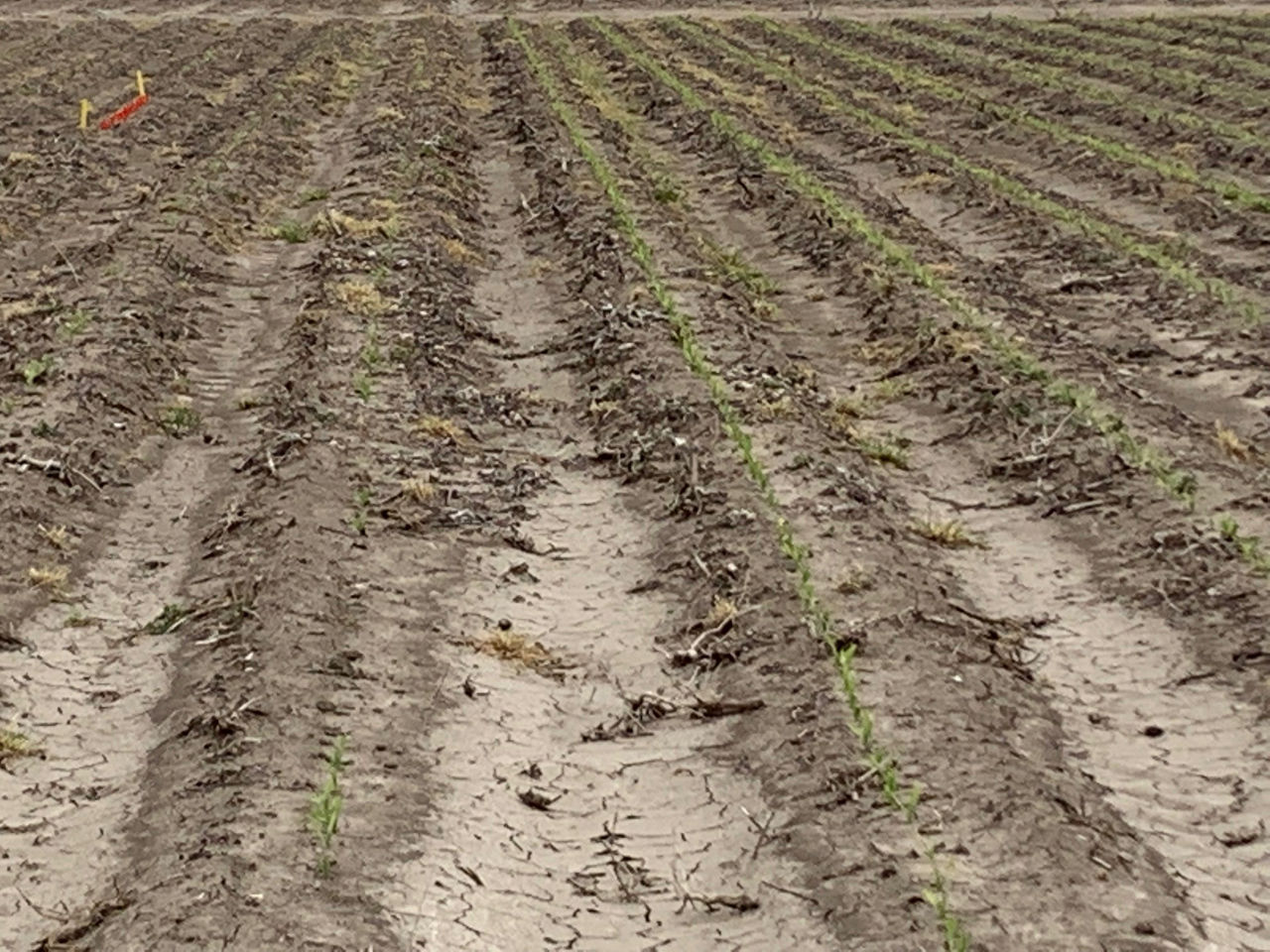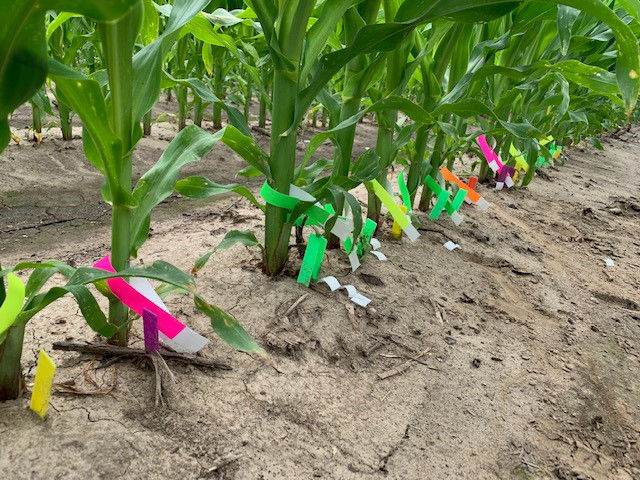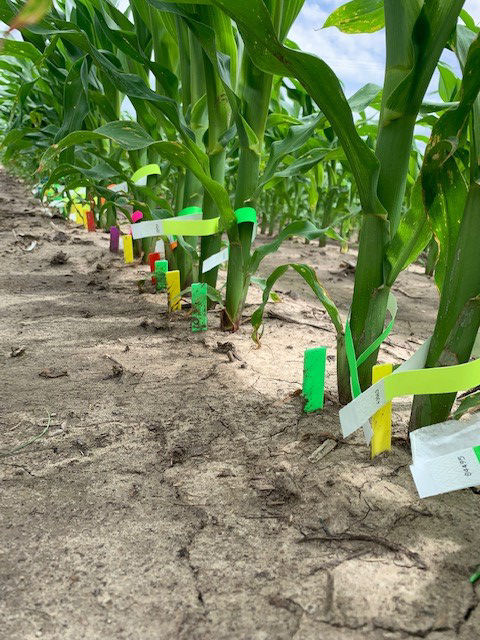5 MIN READ
Impact of Corn Planting Depth on Day of Emergence, Ear Size, and Yield Potential
February 15, 2023
To compare yearly research data, click on a tab.
Impact of Corn Planting Depth on Day of Emergence, Ear Size, and Yield Potential - 2022
TRIAL OBJECTIVE
- The primary objective of this study was to identify the impact of corn planting depth on corn growth.
- Growers can only establish optimal planting depth at planting, primarily via proper decision making, planter maintenance, and planter adjustment.
- Planting depth can impact seedling emergence, establishment, rooting mass, and rooting volume.
- Deeper depths can aid in reducing bird predation of emerging corn seedlings.
RESEARCH SITE DETAILS

- For grain yield, all plots were harvested using commercial machinery.
- For ear size, sample ears were hand harvested, shelled, and corrected for moisture content.
- Grain weights adjusted to 15.5% moisture content.
- Emergence Data
- Plots were sampled for emergence at mid-morning each day (Figures 1, 3, and 4).
- Two, 15-feet samples per plot tagged as emerged.
- Plot information
- Heaven South
- Minimal bird predation.
- Emergence occurred under near normal weather conditions.
- Emergence was staggered over nine days and was more so with the 2.5-inch depth.
- Emergence began on 4/6/22 and continued through 4/15/22.
- Seedling establishment on 4/20 was 90.5% for seeds planted at a depth of 2.5 inches and 92.1% for seeds planted at a depth of 1.25 inches (Figure 5).
- No clear trend in ear size was observed based on planting depth (Figure 6).
- Yields (Figure 7)
- Similar for the two planting depths.
- The 1.25 depth seeds averaged 224 bu/acre.
- The 2.5 depth seeds averaged 225 bu/acre.
- Similar for the two planting depths.
- Heaven South

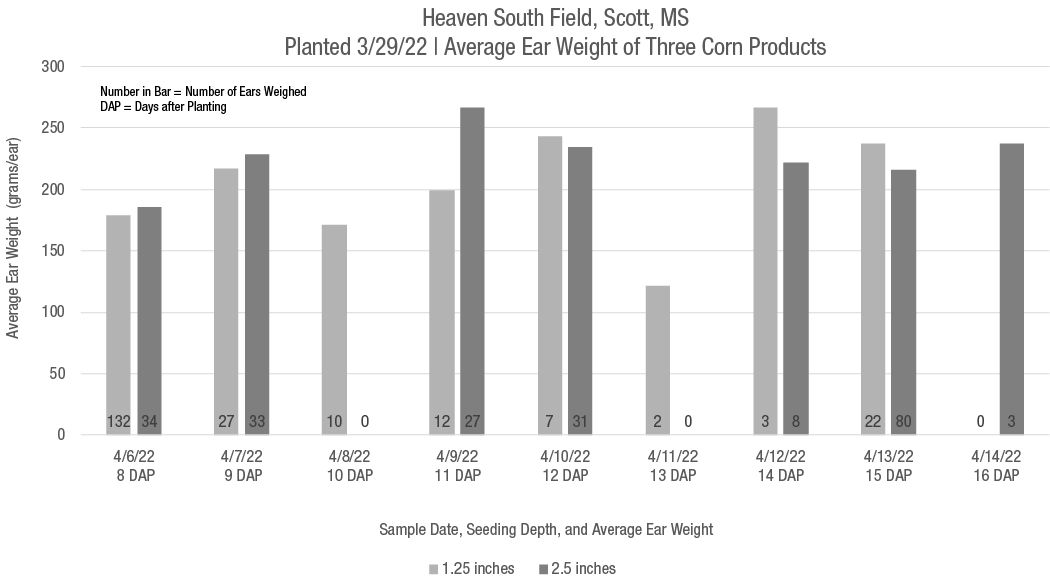
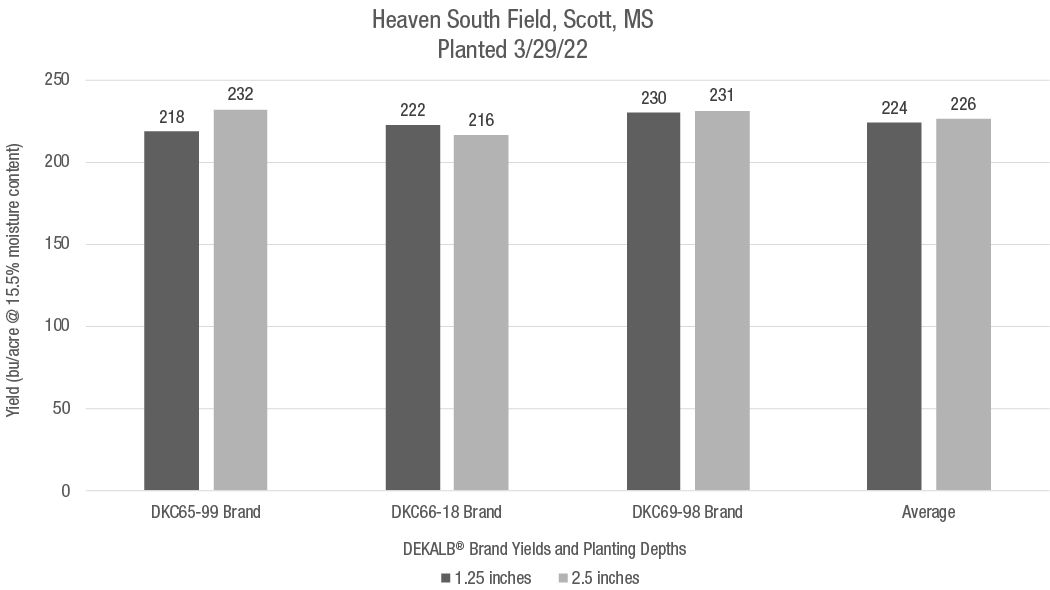
- Field C2
- Heavily influenced by bird predation.
- Soil crusting prevented emergence until crusting was reduced by rainfall which enabled emergence to begin quickly.
- Emergence began on 4/6/22, was nearly complete by 4/8/22, and determined to be complete on 4/12/22 (15 days after planting).
- Seedling establishment on 4/12 was 88.2% for seeds planted at a depth of 2.5 inches and 64.6% for seeds planted at a depth of 1.25 inches (Figure 8).
- The 1.25-inch planting depth emergence and stand establishment was heavily reduced by bird predation.
- The 1.25-inch depth seed did emerge quicker and was mostly complete within 3 days.
- The 2.5-inch depth seed had staggered emergence over the 5-day period.
- No clear trend in ear size was observed based on planting depth (Figure 9).
- Yields (Figure 10)
- The 1.25 depth seeds averaged 108 bu/acre.
- The deeper planted seeds averaged 216 bu/acre.
- Higher because of the increased harvest population, less bird predation, and increased rooting mass and volume.
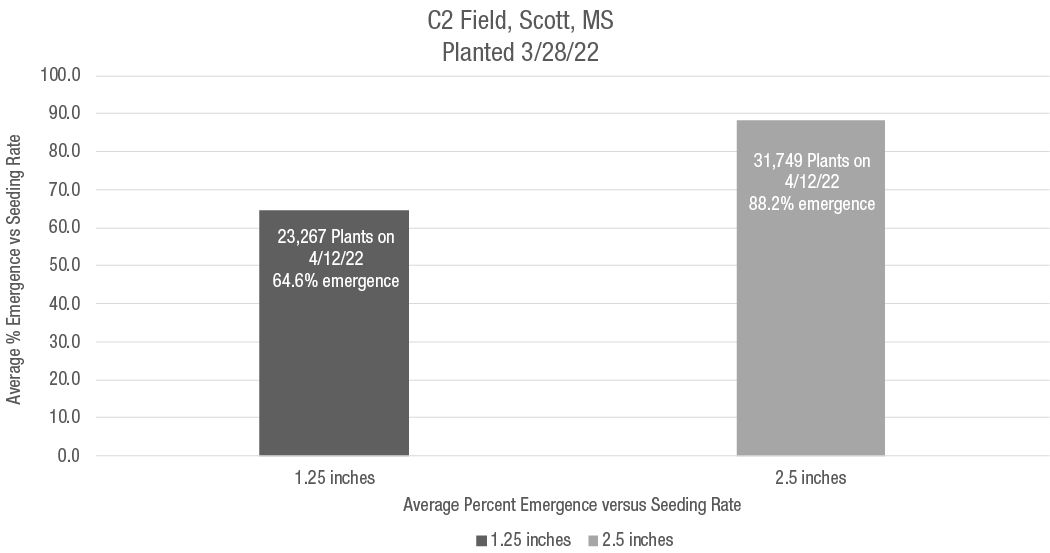

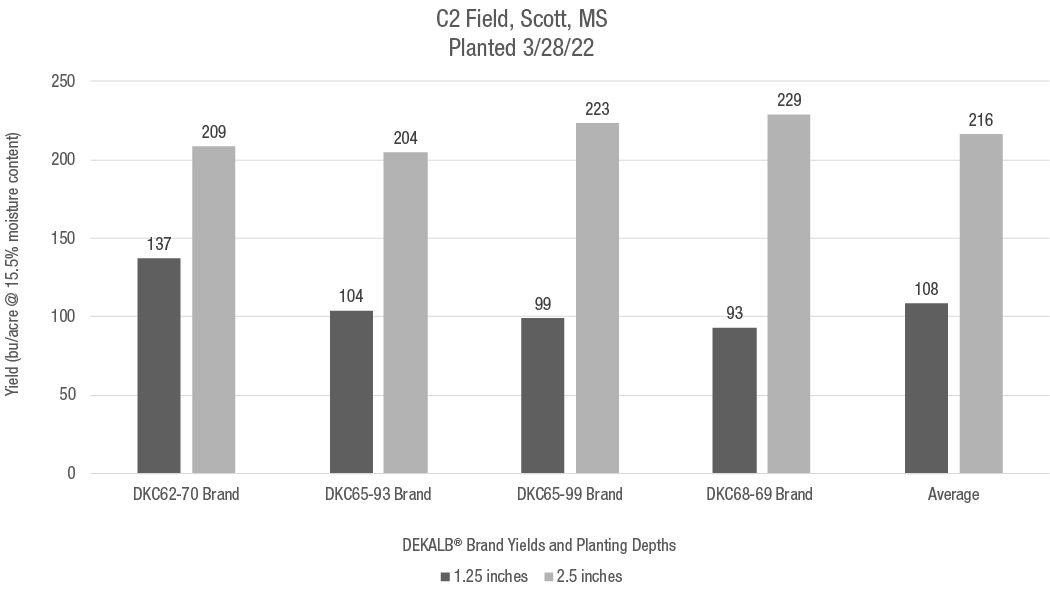
KEY LEARNINGS
- These data demonstrate the importance of proper planning and planting depth in corn production.
- Deeper planting depth can help:
- Reduce bird predation
- Provide for greater rooting mass and rooting volume
- Improve standability and the uptake of fertility and water
- Proper planning is essential in corn planting process and can only be changed at that time
- As much as 100% yield improvement was observed in these trials with deeper planting at the C2 field because of reduced bird predation.
1214_169852

